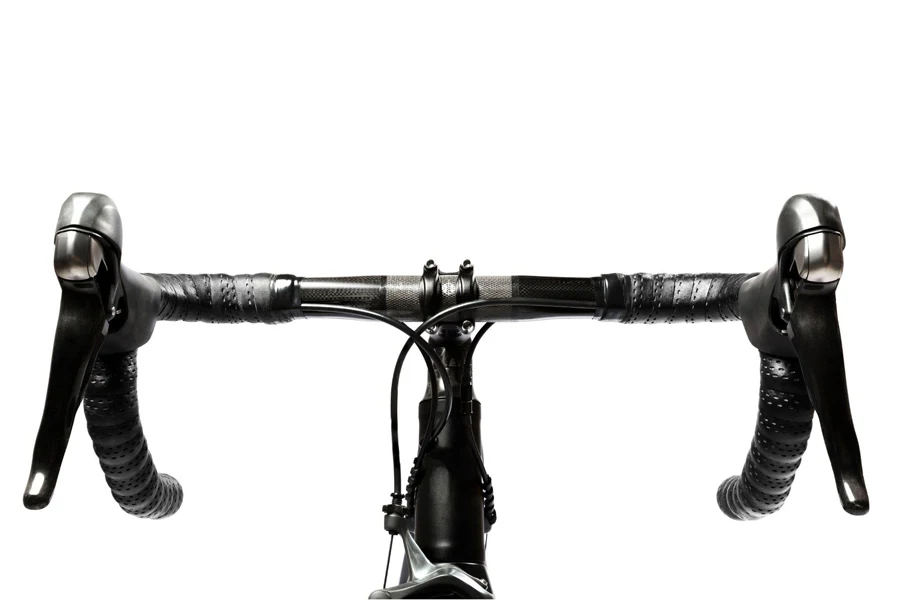Table of Contents
● Introduction
● Bicycle Handlebars Market Overview
● Key Considerations of Selection
● Top Picks for 2024
● Conclusion
Introduction
Choosing the right bicycle handlebars is pivotal to comfort, control, and performance on the ride. With the cycling industry’s continuous innovation, selecting the ideal handlebars becomes a nuanced decision. This guide aims to demystify the process, ensuring business professionals and online retailers to help their customers make informed choices that enhance their cycling experience.
Bicycle Handlebars Market Overview
The bicycle handlebar market is witnessing robust growth, fueled by the rising popularity of cycling for fitness, leisure, and commuting. As of 2023, the market is valued at approximately USD 1.2 billion, with projections indicating a growth to USD 1.5 billion by 2029, reflecting a Compound Annual Growth Rate (CAGR) of around 4.5%. This growth is driven by advancements in materials, ergonomics, and design, catering to diverse cycling disciplines. Leading manufacturers are competing to offer innovative handlebars that promise improved aerodynamics, comfort, and control, catering to the evolving demands of cyclists worldwide.
Key Considerations of Selection
Material Matters
Bicycle handlebars are crafted from various materials, each offering unique benefits to cater to different cycling needs and preferences.
Firstly, this kind of material strikes an excellent balance between strength, weight, and affordability, making it a popular choice for casual riders and those on a budget. Aluminum handlebars are known for their durability and resistance to corrosion, providing a reliable option for everyday use.
Known for its lightweight properties and ability to absorb road vibrations, carbon fiber enhances riding comfort and reduces fatigue, making it a favored option among performance-focused cyclists. Despite its higher price point, the benefits of reduced weight and increased comfort make it a worthwhile investment for serious riders.

Celebrated for its durability and classic aesthetic, steel handlebars offer a timeless look and robust construction. However, their heavier weight compared to aluminum and carbon fiber makes them less common in competitive cycling, though they remain a durable choice for utility and vintage bikes.
Titanium handlebars combine the best of durability, lightweight, and comfort, offering a premium cycling experience. Though they come at a higher cost, their resilience, shock absorption, and longevity make them a valued choice for cyclists who prioritize quality and performance.
Handlebar Types
Bicycle handlebars come in a variety of styles, each suited to different types of riding:
Drop Bars: Known for their aerodynamic advantage, drop bars are a staple on road and racing bikes. They offer multiple hand positions, allowing riders to switch between a more aerodynamic posture and a relaxed one. Modern drop bars integrate brake and gear levers for seamless control.
Flat Bars (Straight Bar): These are the quintessential handlebars for mountain bikes, hybrids, and some road bikes, offering a straightforward design with grips at the ends and thumb-operated gears. Flat bars promote an upright riding position, enhancing control and visibility, especially in recreational and city commuting contexts.
Riser Bars: Similar to flat bars but with an upward curve at the ends, riser bars elevate the rider’s hand position, providing enhanced comfort and control, particularly on technical trails. They are commonly found on mountain bikes and are designed for off-road riding.
Aero Bars (TT Bars): Aero bars are designed for time trials and triathlons, focusing on minimizing wind resistance by putting the rider in a forward-leaning, tucked position. They are typically added to road bikes to transform them into triathlon-ready machines.

Bullhorn and Pursuit Bars: These bars are characterized by their forward and upward curve, resembling bullhorns. Popular in urban and fixed-gear cycling, they offer a unique style and are conducive to sprinting and aggressive riding.
Ergonomics and Fit
Width: The width of the handlebars should closely match the rider’s shoulder width to prevent discomfort and ensure efficient power transfer. Handlebars typically range from 36 cm to 46 cm, allowing riders to choose a size that best fits their body, enhancing comfort and control.
Reach and Drop (for drop bars): These dimensions significantly influence the rider’s posture on the bike. A shorter reach and drop facilitate a more upright and relaxed riding position, reducing strain on the back and shoulders, making them preferable for most riders, especially those who prioritize comfort over aggressive aerodynamics.

Diameter: Compatibility with the bike’s stem is essential for a secure fit. Standard diameters include 31.8mm for modern oversized handlebars, which offer increased stiffness and strength, and 25.4mm for traditional handlebars. Ensuring the correct diameter match is crucial for installation and safety.
Riding Style and Discipline
The choice of bicycle handlebars significantly influences riding style and discipline, enhancing performance, comfort, and control:
Road Cycling: Drop bars are the hallmark of road cycling, designed to offer an aerodynamic posture that maximizes speed and efficiency. Their multiple hand positions allow riders to adapt to long distances, climbs, and sprints, making them ideal for road and racing bikes.
Mountain Biking: Mountain bikers prefer wide flat or riser bars for their ability to provide control and stability over rough and technical terrain. The wider stance helps in maneuvering through challenging trails, ensuring better handling and responsiveness.
Commuting: For urban commuting, handlebars like flat, riser, or cruiser bars are favored for their upright position, which offers comfort and improved visibility in traffic. This ergonomic setup ensures a relaxed ride, suitable for daily travel in city environments.
Racing: In disciplines like time trials and triathlons, aero bars are used for their streamlined design that reduces wind resistance, crucial for achieving top speeds. Specialized racing drop bars may also be employed for their aerodynamic benefits and quick access to gear and brake controls.

Top Picks for 2024
For Road Cyclists
Zipp SL-70 Aero: This carbon fiber drop bar is engineered for both aerodynamics and rider comfort, making it an excellent selection for competitive road racers and cycling aficionados. Its streamlined design minimizes air resistance, while the ergonomic shape ensures long-ride comfort.
For Mountain Bikers
Race Face Next R: Crafted from carbon for both lightness and strength, this riser bar provides superior handling and comfort on demanding mountain trails. Its robust construction ensures durability, while the ergonomic design enhances control during aggressive riding.
For Commuters
Ergon GP5: This handlebar is uniquely designed with integrated bar ends, offering multiple grip positions to suit various riding styles. It’s perfect for the daily commuter, providing the right blend of comfort and adaptability for urban environments.
For Gravel and Adventure Biking
Salsa Cowchipper: Designed with a wider stance and flared drops, this handlebar offers enhanced stability and control on diverse terrains, from smooth roads to rugged gravel paths. It’s the go-to choice for gravel enthusiasts and adventure cyclists seeking versatility and reliability.

For Time-Trial and Triathlon
Profile Design T4+ Carbon: This premium aero bar is tailored for time-trial and triathlon disciplines, featuring extensive adjustability to dial in the perfect aerodynamic position. Its carbon construction ensures lightweight performance, while the ergonomic design promotes comfort over long distances.
Conclusion
Selecting the right handlebars is crucial for achieving the perfect balance between comfort, control, and efficiency on the bike. By considering the key factors outlined in this guide and exploring our top picks for 2024, business professionals and online retailers can assist the consumers to make choices that suit their riding style and enhance their cycling experience. Remember, the best handlebars are those that meet the specific needs and preferences of customers, ensuring every ride is both enjoyable and performance-driven.



